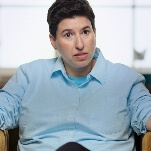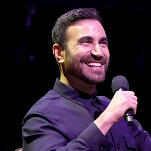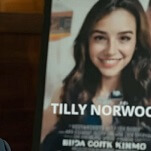An arthouse comer a decade ago, Argentine director Pablo Trapero has all but fallen off the map. But while movies like Carancho and the new White Elephant may lack the aesthetic kick of Trapero’s Crane World and El Bonaerense, he’s as thoughtful and perceptive a filmmaker as ever, using tools appropriate to the goal of drawing attention to systemic social ills.
It’s hard to imagine a more potent symbol of good intentions gone to seed than the decrepit Buenos Aires building that gives White Elephant its title. Intended to be the largest hospital in Latin America, its construction was stopped, started, and stopped again, a victim of Argentina’s shifting political climates and a lack of sustained willpower. Now, it’s a rotting firetrap, home to slum dwellers and a pair of priests, played by Ricardo Darín and Jérémie Renier, involved in another tenuous attempt at urban renewal.
Rénier, first seen cowering in the jungle as thugs seeking him massacre Quechua villagers, has cause to doubt his own faith, which complicates the process of shoring up others’. He takes guidance from the more experienced Darín, one of Argentina’s greatest and busiest actors, and a social worker played by Martina Gusman, who seems to have a piece of information or advice for every slum resident she sees. She walks past bullet-scarred walls like Ray Liotta swanning into Goodfellas’ Copacabana.
Trapero uses lengthy, fluid handheld shots to connect the white elephant’s interior with the sun-scorched world outside, emphasizing the decision to shoot on location in B.A.’s Villa Maria, a crammed, drug-infested warren that butts up against the rapidly gentrifying Puerto Madero quarter. The subplots involving children caught up in drug-related violence inevitably recall City Of God, but they’re just a part of White Elephant’s urban sprawl, which includes mounting tensions amid the construction workers whose paychecks arrive weeks late, if at all. The city and the Church pass the buck back and forth, dodging responsibility as a half-built community center, once a beacon of hope, becomes yet more proof of the mercurial whims of half-hearted do-gooders. Darín and Renier don’t ennoble their men of God so much as mingle their internal doubts with the uncertainty around them. If they can’t believe in themselves, how can anyone else believe in them?








































